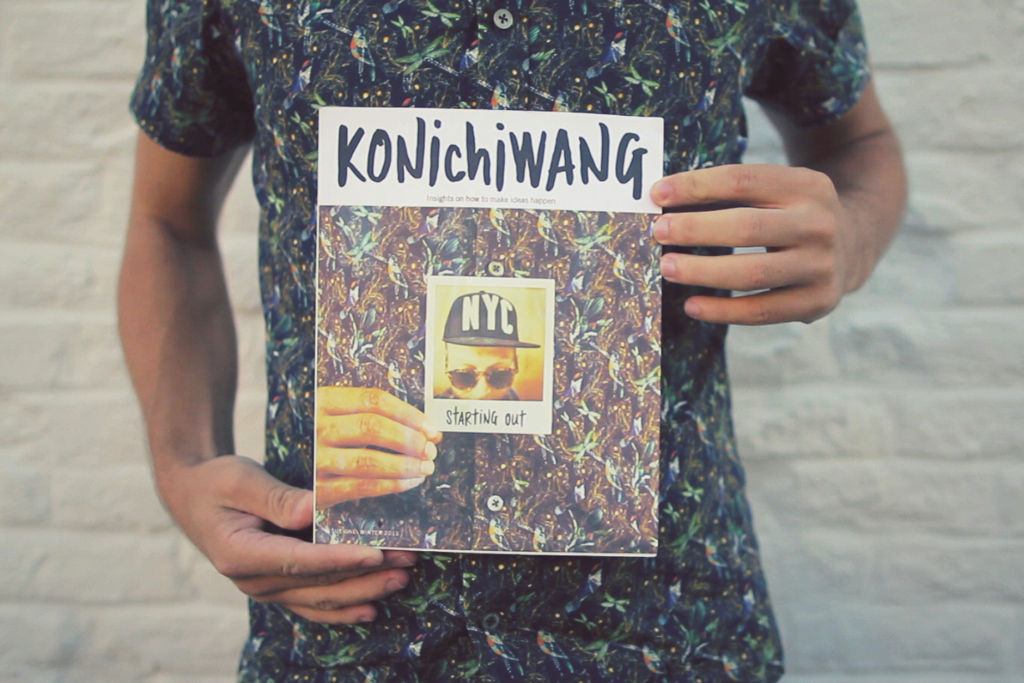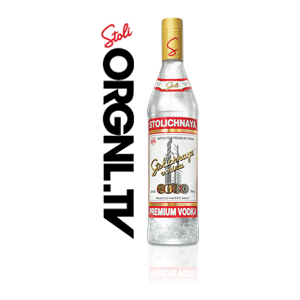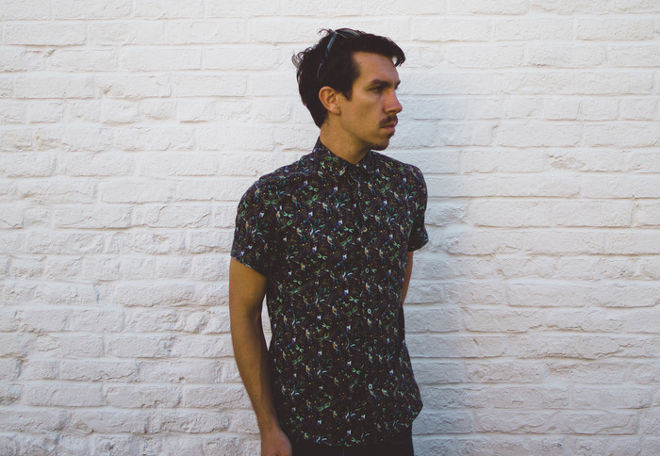How To Make A Magazine In New York
Andrew Green was a Sydney-based DJ and promoter. Now he lives in New York, and he's starting a magazine. Here's how.


For more original people, places and ideas head to
We’re uncovering one-of-a-kind places, people and experiences thanks to ORGNL.TV – a new content hub by Stolichnaya Premium Vodka.
–
An Australian promoter and DJ tires of the easy life, and moves to New York in hunt of a challenge, a job, and a visa. In his final week, he gets employed by VICE and they sponsor him. It’s a dream run, until it isn’t. Because the pay is terrible.
Meet Andrew Green. Sydney-born and New York-based, he recently quit the cult magazine to start his own one: Konichiwang. The magazine will be a quarterly, featuring 12 inspiring Q&As with 12 everyday people, about how they turned their original ideas into a reality without the help of hedge funds or fall-in-the-lap philanthropy.
And he needs $30,000 by October 24 to make it happen.
The magazine will run to about 120 pages of matte recycled paper and soy-based ink; each Q&A is accompanied by eight Polaroids of and four drawings by the subject, and it’s all put together by a very small team: “We’ve got 12 people in design, 58 in ad-sales, 23 in marketing and 289 interns doing unpaid editorial,” Green explains. “Nah, jokes. That’s what some magazines in New York are like, but there’s only three of us in Konichiwang — Doug edits & Nate designs — with an extended family of friends who share their strong opinions with us.”
While the first issue of Konichiwang will feature 12 New Yorkers, Green has plans to hunt overseas for upcoming issues: “East Africa, Brazil, the east coast of Australia and Mexico City are all on the agenda, but I’ll always reserve a third of the magazine for New Yorkers.”
–
You’re an Australian living in New York. How did you get there?
A few years ago I was DJing around Sydney, and co-running Mum, a band night at The World Bar. Life was super easy and I was getting too comfortable, so I decided to shake things up and move to New York. I arrived not knowing anyone, and assumed I’d score an internship immediately, and then my new employer would sponsor me. That didn’t happen — but on the final week before my visa ran out, I scored a job with VICE, and they sponsored my visa.
What were you doing at VICE? Why did you leave?
I worked in their marketing department for a year, and helped to launch Noisey on YouTube. In that time I wrote a few articles, did some hosting, and even introduced Noisey to “EDM”, when I went to cover the Detroit Electronic Music Festival (now they have their EDM site, Thump).
I left because the money was so bad. So, so, so bad. $32K per annum = GROSS! But it was a visa and an opportunity to meet some cool people, who are now some of my best friends.
When you’re open to new ideas, they can pop up all the time. What made you commit to this one?
I was accountable to other people. In the past, I’d told friends about an idea, but because they were never involved they never followed up — so I didn’t feel like I was letting them down when I discarded it. But with Konichiwang, I had interviewees who had given me their time, and I knew that if I didn’t deliver the final product, I’d be disappointing them.

The drive behind Konichiwang is to find out how everyday people turn an original concept into a reality. You must have met some pretty interesting people so far. What’s one of the best stories you’ve encountered?
Shantanu Starick from The Pixel Trade probably has the coolest story of anyone I interviewed; he’s not a New Yorker, but we did do the interview in one of the five boroughs… Anyway, Shan had one of those ideas that you’ve probably heard a hundred times while out drinking with friends: he wanted to see how long he could travel around the world without spending a dollar. But one difference between his idea and all those other ones is that Shan didn’t tell anyone before he launched; the other main difference is that he followed through with it.
He made it happen by trading his photography skills for board and accommodation. In the year and a bit since he started the Pixel Trade, he has traveled to four continents, worked every single day, and hasn’t earnt a single dollar… But nor has he spent one.
The magazine will also be a place where people can find out about cool new ideas. So where do you find out about them?
One of the greatest things about New York City is that almost everyone is hustling to make an idea happen. In the almost-three years I’ve been here, I’ve been fortunate to meet a lot of cool people that I admire. Many of the people featured in the first issue are people I know personally, but we’d never really chatted in depth about how they’d started out. As for the other interviewees who I admired from afar but hadn’t met before, like Christina Caradona and Karley Sciortino, I managed to find a mutual friend to make an introduction.
You’re funding the first phase of the product through Kickstarter. What advice would you give people aiming to crowd-fund their project?
Kickstarter is about to launch in Australia and New Zealand, so it’s good timing to ask this question. In short, make sure your project is ready for launch a month before you want to actually launch, then spend that time preparing your friends to support you and start conversations with media. I’m writing a daily blog about my experience on Kickstarter — if you have any questions, just leave a comment and I’ll get back to you.

Each issue will be accompanied by a limited edition matching wallpaper-style shirt; think Garden State, but with a better cut. Here’s Andrew Green modelling the first one, which is one of the Kickstarter rewards.
You chose to make this a magazine first, before building a website. Seems like most people go the other way; it’s quicker and easier to test an idea out on Tumblr. Why print?
There a few reasons I chose print. I don’t want my job to be about SEO. If I’m going to do digital, I want it to be about an amazing experience, not about endless content (although we are launching a special website next Wednesday), and I think people take you more seriously when you drop a magazine on their desk and it makes that thump sound. Blogs and sites get more exposure, but often you’re too distracted by other tabs and messenger programs to concentrate online, so by giving people a printed magazine I hope to get them to go deeper into the stories. That said, if you have an idea, test it online and you won’t risk much money. Get it out good, not perfect, and build from there.
New York is a pretty flooded market in publishing. How are you going to make this magazine stand out from all the others?
You’re totally right. First, I’m trying to avoid having the magazine on a newsstand; instead, I want it to be stocked in hotel rooms and in food and fashion outlets. If Konichiwang does end up on a newsstand, it will be distinctive in the business section alongside magazines like BRW and Forbes because it will look like an arts magazine, void of too much information on the cover. And if you happen to see Konichiwang in the lifestyle section next to GQ and Nylon it will stand out because there won’t be a face on the cover to sell it. We’re not relying on big names; just great stories that make the reader feel like they can make their ideas happen.
If you were to publish an Australian issue, what three people would you approach first?
I’ve been thinking about who I’d interview in Australia since I started Konichiwang, so my list is quite long — but here’s three that come to mind immediately. Campbell Milligan from Monster Children: I’m curious to know how they did everything they weren’t meant to do — like publish in landscape — and still succeed. Sam Coombes from Batlow Cider: I want to know how he and his brother took a waste product — unsaleable apples — and turned it into a premium one. And Indhra Gare from We Are Handsome: I’d like to learn how they created a fashion brand and stuck to their principals by keeping everything Australian made.
–
To find out more, head to the Konichiwang website, or donate to their Kickstarter campaign.